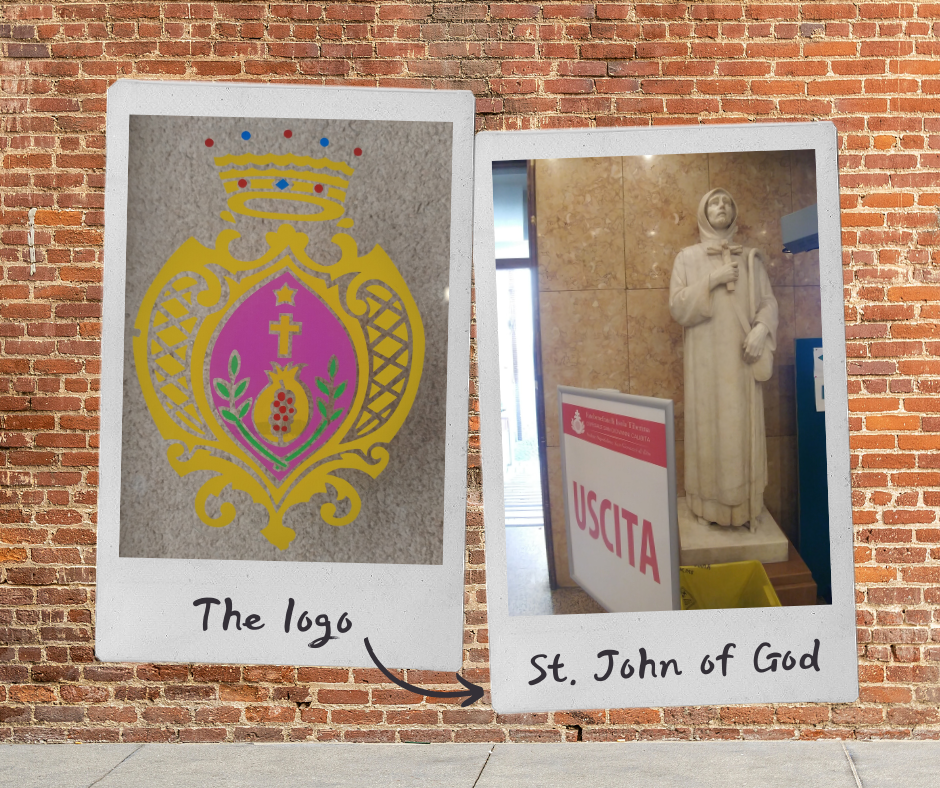|
Roma, July 10, 2020 I accompanied a fellow Dominican to the “Fatebenefratelli” hospital; it was my first experience at a Roman Catholic hospital in Rome. After the Covid fever scan at the hospital entrance, and the hand disinfectant procedures, the Dominican Brother I was accompanying withdrew to the doctor’s office. I had a chance to explore the beautiful hospital in its spiritual setting, a health facility in a monastic environment. This well-known hospital in Rome is run by the Order of Hospitallers founded by St. John of God. The Order was originally established to care for the poor and infirm in the mid-1500s. The Roman hospital preserved the original monastic structure of the Order. This historical preservation of ancient buildings whether the Classical, Medieaval, Renaissance or Baroque periods, is regulated by Italy’s Ministry of Cultural Heritage and Activities; old buildings or statues are not taken down, but preserved and restored. In the human psyche history and culture are inseparable and this is especially true when pertaining to religious history, art and architecture. Not all governments intervene to protect historical edifices, or educate the people in the value of art, architecture and historical symbols. The Fatebenefratelli hospital registration/waiting area preserves a combination of the original cloister of the Order of St. John of God and contemporary facilities.
St. John of God, João Duarte Cidade, was born in 1495 in the Kingdom of Portugal. A soldier, dissatisfied with his life, he experienced a mental break down. He began to care for the poor and infirm, based on a vision he had of the Virgin Mary, relying on resources from his own begging in Grenada, Spain. Due to his mental illness and the reputation of mental instability, support was lacking in his charitable project; but he eventually obtained the assistance of priests and physicians. The name he had received by the Infant Jesus in a vision, “John of God,” was used and kept by the Bishop of Tui. The Order of Hospitallers (O.H.) was approved by the Holy See in 1571. Pope Alexander VIII canonised John of God in 1690. “Fatebenefratelli” was the expression used by John of God in Grenada while he was begging for help, “Do good, brothers.” His followers as members of the Order of Hospitallers named the Roman hospital, “Do good brothers for the love of God.” Based on their Constitutions the Order forms the religious backbone to the Fatebenefratelli hospital. The values of the Order permeate the hospital especially bioethics and the humanisation of care. Fatebenefratelli hospital is situated on the island of Tiberina in Rome surrounded by the Tiber River. The history of the hospital shows the transformation of hospital care. Originally built in the year 1000AD and run by Benedictine Sisters, the facility served as a refuge for the homeless, infirm, and poor. By the 16th century, rather than a shelter, the edifice was transformed into a hospital that served to restore health anticipating modern hospitals so that the ill were no longer simply “sheltered” but visited by nurses, physicians, and surgeons. Shortly after John of God founded the Order of Hospitallers, in the late 1500s, two members of the Order arrived on the hospital island of Tiberina to apply John’s of God’s religious philosophy of care. The building at the time included a monastery with an adjacent Church dating back to the tenth century dedicated to St. John Calibita. By the seventeenth century, a period known for its epidemics and pestilence, with the isolated position of the hospital on the island of Tiberina, a school was developed in the treatment of epidemics. From a shelter for the poor and infirm to a modern hospital that has developed out of John of God’s Christian principle of care, the hospital stands in Rome with a one thousand year history. It should not come as a surprise that in English the Latin-derived words “hostel,” “hospice,” and “hospital” are all interrelated (even hotel!). The Order of Hospitallers and Fatebenefratelli hospitals are now found in 49 countries.
2 Comments
Gordon R. Johnson
11/7/2020 12:34:41
A very thorough description of a hospital and an Order that I had not heard of before. Thank you very much for enlightening me on this "saint", his history and his health struggles and determination to follow through on directions by God and by the Virgin Mary are an inspiration to those of us today who struggle. Thank you and Blessings to you.
Reply
Ramona
12/7/2020 06:51:58
Thanks for sharing your experience. We learn so much through your generosity of Spirit. Safe travels.
Reply
Your comment will be posted after it is approved.
Leave a Reply. |
AuthorFr. David Bellusci, O.P. List by Titles
Archives
May 2023
Categories
All
|

 RSS Feed
RSS Feed